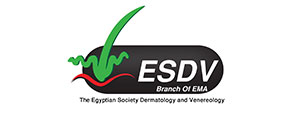Objectives: Nobody likes to have scars. Even if wound healing processes progress according to plans, scars represent permanent unsightly marks with unique clinical behaviour. Wounding agents, size and depth of tissue damage, anatomical location, genetic reactivity are just some of the key factors influencing functional and aesthetic features of scars. When specific wounding agent damage skin and subcutaneous tissues, the body protective barrier is more or less deeply disturbed in its overall integrity. When our first line of defense falls, the second line of protection is rapidly mobilized,
Introduction: calling a cascade of cellular and humoral “troops” to repulse possible invaders while specialized units remove biologically unusable debris and start to repair the gap. Keeping always in mind that normal skin is always better than a scar, all possible precautions should be taken in order to avoid or minimize the intensity and duration of the complex cascade of events known as wound healing. Topicals have been proven effective in speeding and optimizing wound healing processes when properly used according to specific timetables. It is well known that “occlusive” dressings work better than
Materials / method: open wound skin care, even if the risk of infections and maceration should be always considered. The rule of thumb should always be choosing the most ”natural”, inert, bacteriostatic, semi-permeable topical temporary substitute of normal skin barrier. These specific topicals should theoretically reproduce, at least in part, the protective function of the skin barrier that has been damaged by wounding agents. This specific action is able to positively modulate all the events involved by the mobilization of the second line of body defences. Silicones are a “universe” of different entities widely
Results: A proper choice of sterile silicone formulas can be used immediately after acute wounding actions providing an early “help” to reduce a possible uncontrolled hyperactivity of repair processes often leading to scar complications such as hypertrophic and keloidal evolution, hyper and hypopigmentary alterations.
Conclusion: Antiinflammatory and antiangiogenic topicals can be also used according to specific timetables providing an “external” control of tendentially exuberant healing processes. Scars mature with time and special skin care with appropriate moisturizers and high SPF topicals should be implemented to “assist” this often poorely considered part of the healing process.
Divulgação de informações
Você recebeu algum patrocínio para sua pesquisa neste tema?
Não
Você recebeu algum tipo de honorário, pagamento ou outra forma de compensação por seu trabalho neste estudo?
Não
Você possui relação financeira com alguma entidade que possa competir com os medicamentos, materiais ou instrumentos abordados no seu estudo?
Não
Você detém ou pediu a registro de patente para algum dos instrumentos, medicamentos ou materiais abordados no seu estudo?
Não
Este trabalho foi realizado com o patrocínio de: Stratpharma AG
















